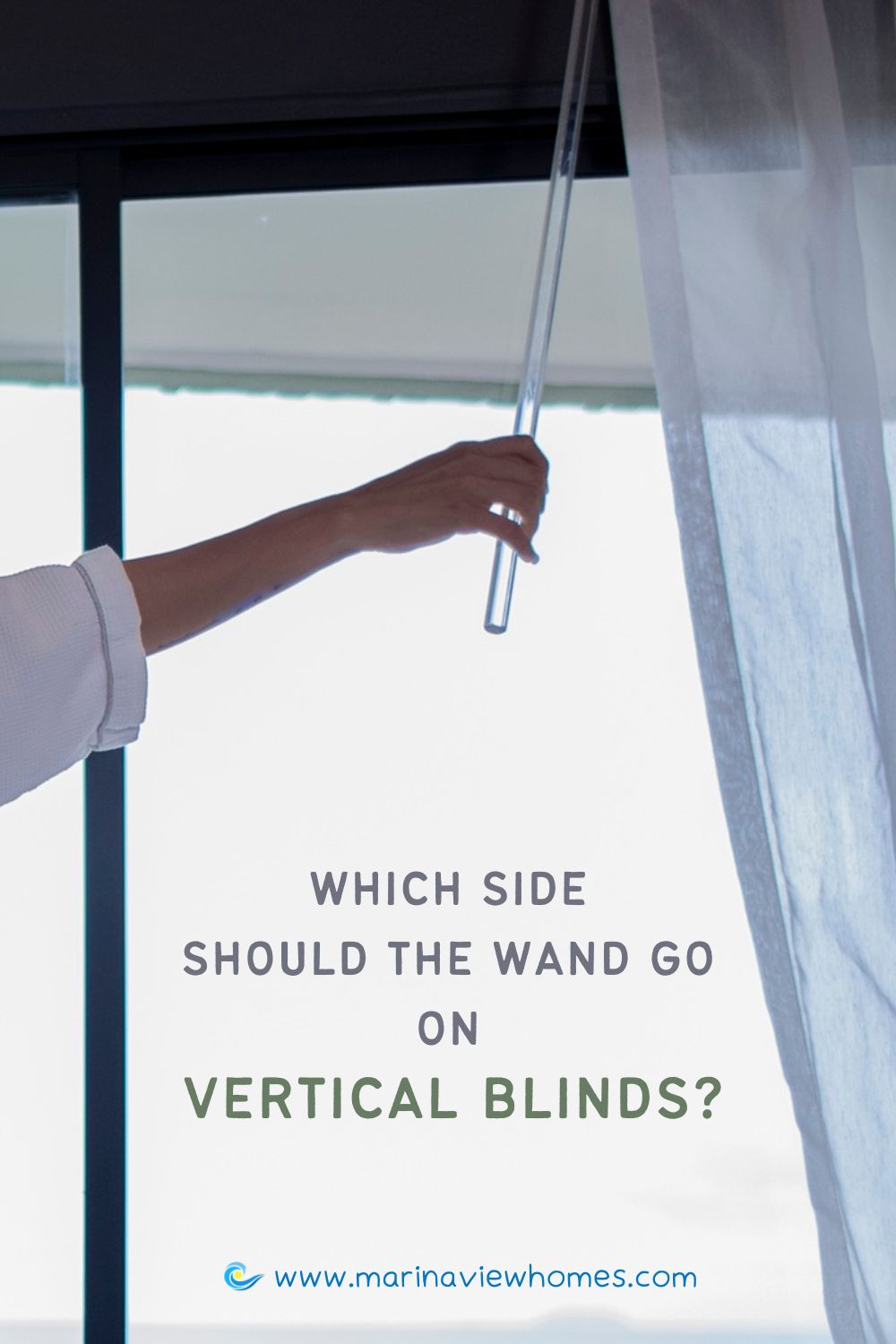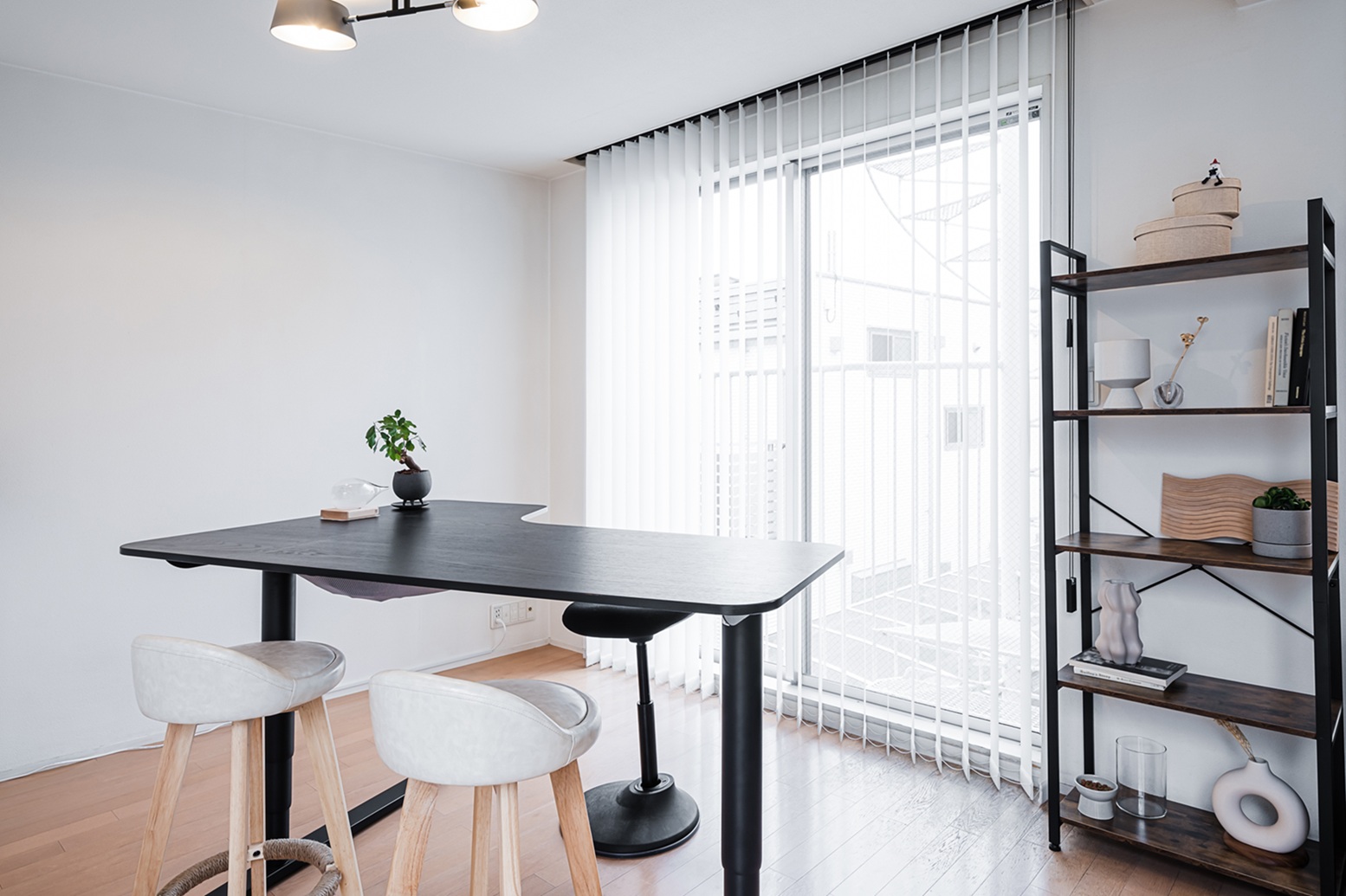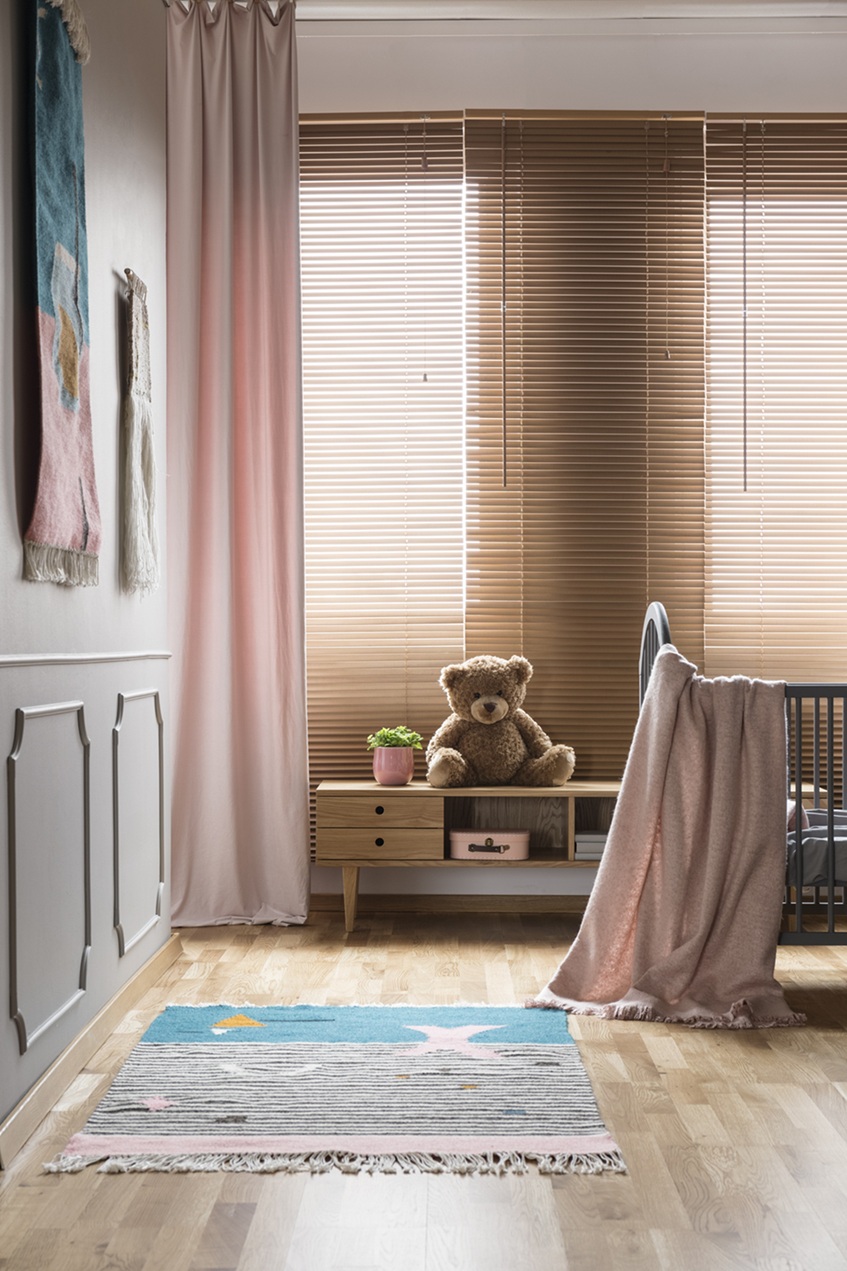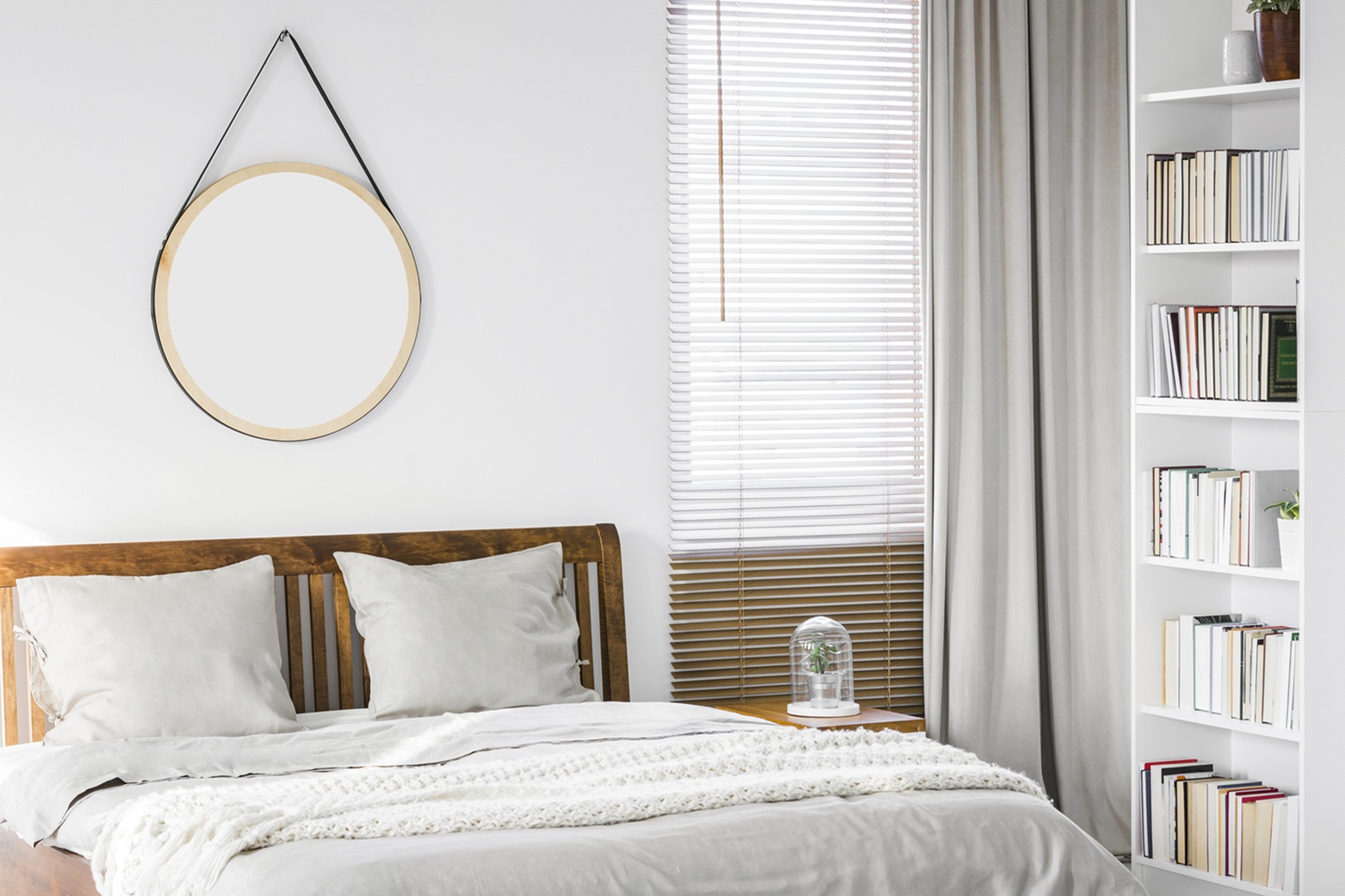If you’ve ever installed or adjusted vertical blinds, it’s no wonder you may be asking yourself this tricky question: Which side should the wand go on — left or right?
At first glance, it seems like a minor detail. But when you use your blinds every day — opening them for get some sun in the morning or closing them for privacy at night — the position of that little wand can make a noticeable difference in your daily comfort and convenience.
It’s one of those things that most people don’t think about until they’re faced with the choice themselves. Interestingly, after doing some research, I have found that homeowners and renters have varied opinions on this issue. Some swear by the right side, others insist on the left, and some have even more creative answers. What became clear is that the “right” side often depends on personal habits, the layout of your room, and how you interact with the space.
In this article, I will explore the different perspectives shared by real homeowners, and consider the practical factors that can help you decide the best side for your vertical blind wand. Because yes — even small decisions like this one deserve thoughtful consideration. So, keep reading to find out more!
What Are Vertical Blinds? What Does The Wand Actually Do?
Vertical blinds are a popular window treatment option, especially for larger windows and sliding glass doors. As their name suggests, these blinds consist of vertical slats, or vanes, that hang from a horizontal track at the top of the window. They’re known for their sleek appearance, easy maintenance, and practical functionality in both homes and offices.
A key component of many vertical blind systems is the wand. It’s a slim rod that replaces the older style of cords and chains.
But the wand isn’t just for looks. It serves as the main control mechanism for both rotating and moving the vanes. Its simple design should eliminate the hazards associated with dangling cords, which makes it a safer choice for households with children or pets. Plus, it lends your blinds a cleaner, more streamlined appearance.
Using the wand is straightforward:
– To adjust privacy and light levels, rotate the vanes by turning the wand clockwise or counterclockwise.
– To fully open the blinds, first rotate the vanes to the open position, then gently push the wand to slide the slats across the window.
– To close them, pull the wand to bring the vanes back across the window, then rotate them shut.
This all-in-one function makes the wand a practical and intuitive tool — but its effectiveness depends a lot on where it’s placed. That brings us back to the question: should it be on the left or the right?

Practical Factors That Influence Wand Placement
While personal preference plays a role in wand placement, many homeowners make their decision based on practical considerations. The layout of your space and how you interact with it on a daily basis can make one side significantly more convenient than the other.
Here are the main factors to think about:
– Window or door configuration
One of the most common guidelines for wand placement is to consider which way your window or door opens. In many cases, the vertical blinds wand is installed on the same side as the opening. This isn’t just tradition — it’s a matter of function.
When vertical blinds cover a sliding door or window, they should ideally open away from the side that opens. This allows you to access the opening without pushing vanes out of the way or risking damage. For example, if your patio door opens on the right side, the blinds should stack on the left — and the wand should be placed on the left, too.
This arrangement supports the logic that vertical blinds should open in the direction opposite of the door/window opening, which ensures smoother operation and unobstructed access.
– Room layout and ease of access
Beyond the window itself, think about the layout of your room. The position of furniture and the flow of movement through the space can help determine which side makes the most sense for the wand.
Ask yourself:
Is one side of the window blocked by a couch or cabinet?
Which side is easier to walk up to?
From where do you usually approach the blinds — your bed, the hallway, a desk?
Many homeowners base their decision on these simple but important questions. One person even noted, “nearest the door to the room” as a helpful rule of thumb, choosing the side closest to their typical entry point.
In smaller rooms, especially bedrooms or offices, placing the wand on the most accessible side can make everyday use much more seamless. After all, the last thing you want is to reach awkwardly behind a dresser just to let in some light.
Taking a moment to assess the physical setup of your space can go a long way in choosing the most logical and comfortable side for your blind’s wand.

Most Common Preferences
While there’s no universal rule for which side the wand should go on, patterns do tend to emerge among homeowners and renters. What I’ve noticed, based on responses from real users, a few common preferences stand out. Although even these are often shaped by a mix of habit, practicality, and personal taste.
1. The right side: A perceived standard
For many people, the wand naturally goes on the right side. This is often seen as the default or “standard” setup, especially if you’ve moved into a home where the blinds were already installed this way. There’s also a practical reason behind this preference: many vertical blinds open from left to right, which puts the wand on the right side for easy pushing and pulling.
Over time, this layout has become familiar to homeowners and renters alike, reinforcing the idea that right equals normal. But, as we’ll see, that’s far from the only valid choice.
2. Aesthetic preferences and symmetry
Some homeowners choose wand placement based on visual balance. If you have multiple windows in a room, you might place the wand on the same side for each to create a clean, uniform look. Others may consider how the blinds appear in relation to nearby walls, furniture, or architectural features and choose the side that “looks right” for the space.
Aesthetics can be subtle, but they’re worth considering, especially if your blinds are a focal point in the room.
3. Handedness matters
Another factor that influences wand placement is handedness. One left-handed homeowner shared that they naturally placed the wand on the left, finding it more intuitive and comfortable to operate.
So if you’re left-handed, you might find that placing the wand on your dominant side makes daily use smoother. The same applies for right-handed users who prefer the right. It’s a small touch, but one that can make the blinds feel more tailored to you.

4. Consistency across the home
For some homeowners, it’s all about consistency. One person noted that all the blinds in their home are on the same side. That’s a simple choice that brings uniformity and avoids confusion. Think — if you’re outfitting multiple rooms with vertical blinds, placing the wand on the same side in each room can streamline operation and maintain a cohesive look.
5. Sometimes it’s just how they came
Finally, it’s worth noting that sometimes the decision is made for you. If your blinds were installed by a previous homeowner, landlord, or builder, the wand may already be placed on a certain side. And for many people, that setup is good enough — if it works, why change it?
In short, people base their preferences on what feels normal, looks balanced, and functions best within their specific living space. And while “right side” might be the most common setup, it’s certainly not the only valid one.
The Wand Placement Debate: Left Or Right?
When it comes to deciding which side of the vertical blinds the wand should go on, homeowners and renters have no shortage of opinions. In fact, the opinions are all over the place.
Some people confidently answer “left,” while others just as firmly say “right.” A few admit they had never really thought about it, while others have strong preferences rooted in daily routines, room layouts, or even their dominant hand.
What is clear from the huge range of answers is that there is no one-size-fits-all solution. Each home, and each person, has a different flow and rhythm. The perfect wand placement for one person might feel awkward or impractical to another.
The main takeaway echoed by many was simple yet wise:
“Whichever way is easiest to use. No right or wrong way.”
That sentiment really captures the heart of the debate. It’s not about following a rule. But it’s about creating a setup that makes your life easier.
I read that one particularly creative homeowner even shared that they placed the wand in the center of their blinds. For them, that spot was the most convenient to reach and operate. And this is really a great reminder that you’re not limited to choosing strictly left or right. You can just think outside the box if it better suits your space.
In the end, wand placement is a personal decision influenced by functionality, comfort, and a bit of experimentation. The key here is to try what works best in your place. And don’t be afraid to change it if it doesn’t feel quite right.

To Wrap Things Up…
So — left or right? When it comes to wand placement on vertical blinds, the answer isn’t written in stone. Both sides are completely valid options, and ultimately, the “right” side is the one that works best for you and your home.
What might seem like a small design choice can actually have a big impact on your daily routine. Whether you’re opening the blinds to let the morning sun in or closing them for privacy at night, you surely want the experience to be smooth, convenient, and intuitive. That’s why wand placement is less about following trends or standards, and more about tailoring your blinds to your unique space, layout, and habits.
Now, before committing to one side, take a moment to think:
Which direction does your door or window open?
Which side is easier to access from where you usually stand or sit?
Do you have any furniture that might get in the way?
Which side simply feels more comfortable for you?
Better yet, if possible, test out both sides. You might be surprised which one feels more natural once you try using the blinds a few times from each position.
In the end, don’t stress too much about following a “standard.” Wand placement is one of those details where function, comfort, and personal preference should take the lead. After all, your home should work for you — down to the very last detail.

